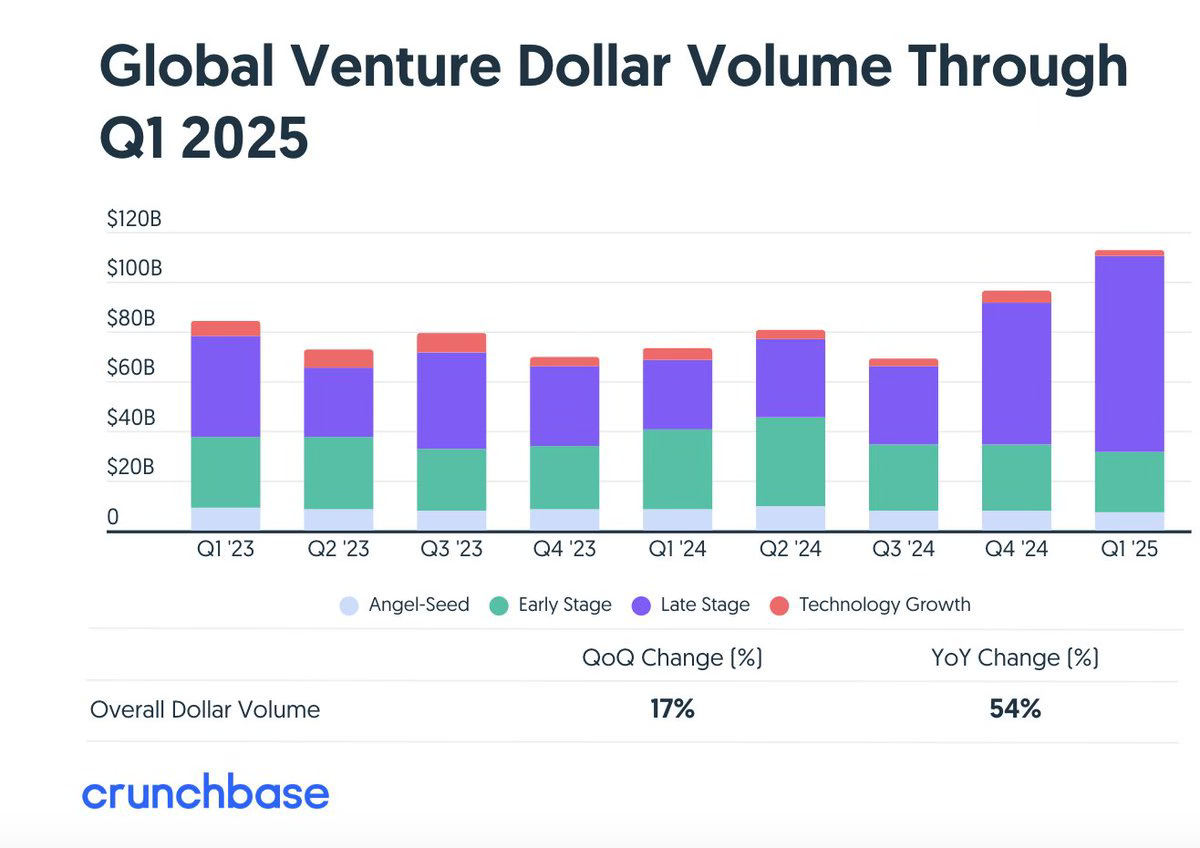👋 Hey there, it's Diana! Welcome to the #19 issue of the Operations Optimist newsletter. Each week, I tackle questions about building operations functions in startups and share my lessons from working in venture capital.
Reading about a solo founder selling his one-year old business for $80m got me thinking about what’s it like starting a company in 2025.
Things surely have changed. VCs used to bet on teams, now they dream about one-person one-billion companies. Founders can now spin up MVPs on a shoestring. And on top of it, VCs have a lot of unallocated capital. Let’s dive in!
One-man-shows rock
More and more, technical founders are skipping the non-technical co-founder. The tooling has evolved so much that it’s completely redefined what an MVP is — and how fast you can ship one. AI-assisted dev environments mean a single founder can go from idea to working product in a matter of weeks. Meanwhile, LLMs also let them write landing pages, set up email campaigns, and build basic financial models on their own.
In 2025, being just the idea person isn’t enough. If you’re a non-technical founder, start growing your technical aptitude. The skill of making nicely looking keynotes alone won’t cut it.
You can start with less
Due to the available tools and enhanced productivity, the cost of building an idea has dropped. Founding teams can be smaller, but you do need a way to talk to potential users.
And while building an idea might be cheaper, getting it out to people is not. Sure, community-building tools are free, but they require time, taste and edge. You need to cut through a lot of noise, because while the barrier to entry is low, so is the barrier for everyone else.
VCs are shifting too
Investors are evolving with the landscape. The bar is no longer just founder credentials, it's the proof of getting things done. Early-stage funding is flowing to founders who can move fast and have channels to test these ideas.
And the VC slowdown? Looks like it’s coming to an end.
A few forces are in play.
Interest rates are dropping → capital is cheaper → institutional investors are more likely to invest in risky asset classes, i.e., venture
AI → everyone wants to board the hype train
All that being said, this is a great time to be pitching, investors are ready to deploy funds 🤑
So, where should you start?
If you have an idea, try building it. Lovable or not, do whatever it takes to build out your idea so that you can test the waters with.
If you have a prototype, try building a community around it (or yourself). It’s really hard to generate virality, but having some online presence to test your idea will get you the much-needed first feedback. Get some eyeballs and clicks on your thing.
If you have both, and you are trying to figure out where to go next, try to ballpark your budget for the next big milestone. How much money you need to reach it? Budget for yourself, your team, technical costs, any potential overheads. And then you can figure out if you wanna bootstrap or raise.
My general advice — see how far you can get before you ask anyone for money. Once you have evidence of interest, early usage, the scope of what you need, you’ll be in a stronger position for fundraising. And hiring.


